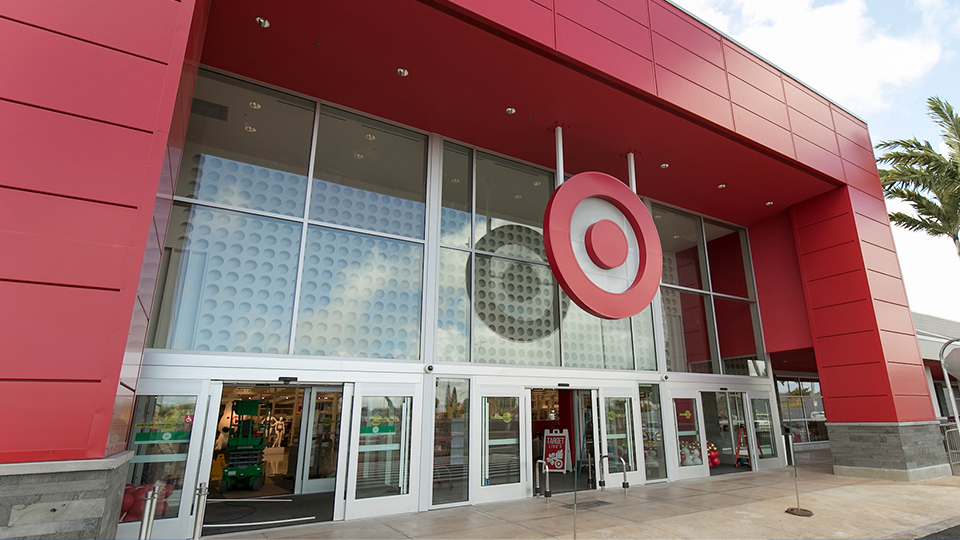Target reports Q2 sales drop, cuts profit outlook for 2023
Subscriber Benefit
As a subscriber you can listen to articles at work, in the car, or while you work out. Subscribe Now
Target reported a second-quarter sales drop, dragged down by shoppers’ inflation worries and a negative reaction by some customers, widely publicized on social media, to its Pride merchandise.
The Minneapolis retailer expects high interest rates, which makes credit cards more expensive to use, and higher prices on food to continue to put a strain on customers and on Wednesday, the chain cut its profit outlook for the year. It also expects sales will decline for the remainder of the year. In lowering its forecast, Target also cited the end of the student loan moratorium, which had provided one-time college students a little more financial breathing room.
Profit came in above expectations, however, as Target brought inventories closer in line with cautionary spending on discretionary items by customers.
Shares rose nearly 6% in early morning trading Wednesday despite trimming profit expectations for the year.
Target is among the first major U.S. retailers to report quarterly financial results and the impact of rising prices and elevated interest on its customers will get a lot of attention ahead of a raft of quarterly reports from companies like Walmart other retailers.
CEO Brian Cornell said higher high prices for food and household essentials are taking a bigger chunk out of the paychecks of customers, who have also pulled back on buying some goods in favor of travel or spending time out of the house in other ways.
“Guests are out at concerts,” Cornell told reporters on a media call Tuesday. “They’re going to movies. They’ve seen ‘Barbie.’ They’re enjoying those experiential moments, and they’re shopping very carefully for discretionary goods.”
Other retailers are seeing the same thing.
Home Depot, the nation’s largest home improvement retailer, said Tuesday that sales continued to decline after surging in recent years. Sales of big-ticket items, those that may require financing, were particularly hard hit.
Industry analysts will be eager to see if the same forces are impacting other retailers reporting earnings this week, including Walmart, the nation’s largest, on Thursday. Macy’s, Kohl’s and Nordstrom post quarterly results later this month.
This week, the U.S. reported that Americans increased their spending last month, but higher interest rates are weighing on economic activities that are highly dependent on credit, like sales of homes, vehicles, furniture and electronics.
Target is more vulnerable than other big box discounters like Walmart. More than 50% of Target’s annual sales come from discretionary items like toys, fashion and electronic gadgets, according to the company’s latest annual financial report.
Target also faced a unique problem during the most recent quarter, becoming one of the companies that was targeted for its LGBTQ+ support, in particular, its displays of Pride Month merchandise. It pulled some items in particular regions and made other changes after encountering hostility from some customers who confronted workers and tipped over displays. Company executives said this week that it couldn’t tease out how much the negative reaction had on its business, but once it made the changes, those incidents subsided. Overall sales improved in July from June.
Cornell said that the company has learned from the backlash and said it will be more thoughtful in merchandise offerings for its heritage months, which celebrate various ethnic and marginalized groups.
“We’ll continue to celebrate Pride and other heritage moments, which are just one part of our commitment to support a diverse teams and guests, ” Cornell told reporters. “However, as we navigate an ever changing operating and social environment, we’re applying what we’ve learned to ensure we’re staying close to our guests and their expectations of Target.”
Target earned $835 million, or $1.80 per share, in the quarter that ended July 29. That compares with $183 million, or 39 cent per share, in the year-ago period.
Sales fell nearly 5% to $24.77 billion as shoppers focused more on groceries than discretionary items. Business in the quarter was also hurt because results were being compared with heavy discounting in the year-ago period that was meant to clear unwanted inventory as shoppers pulled back.
Analysts had been expecting profits of $1.43 per share on sales of $25.18 billion, according to FactSet.
Inventory at the end of the second quarter was 17% lower than last year, reflecting a 25% reduction in discretionary categories like fashion and home furnishings.
Comparable sales — those from stores or digital channels operating for the past 12 months — fell 5.4% in the latest quarter. In the fiscal first quarter, sales were unchanged.
Target now expects comparable sales in a wide range around a mid-single digit decline for the remainder of the year. It also now projects full-year adjusted earnings per share of $7 to $8, compared with the prior range of $7.75 to $8.75. Analysts were expecting $7.72 per share for the year, according to FactSet.
Target’s shares were up $7 to $132.44 in morning trading.
